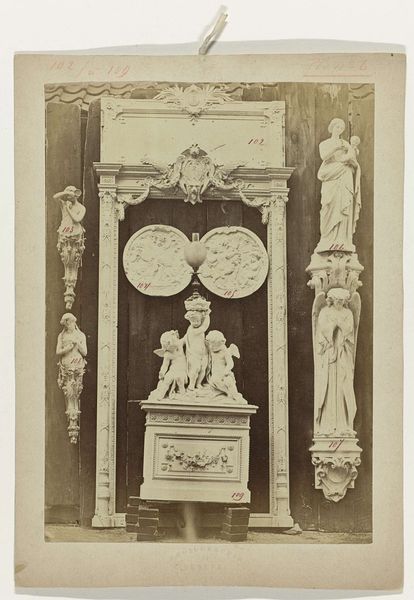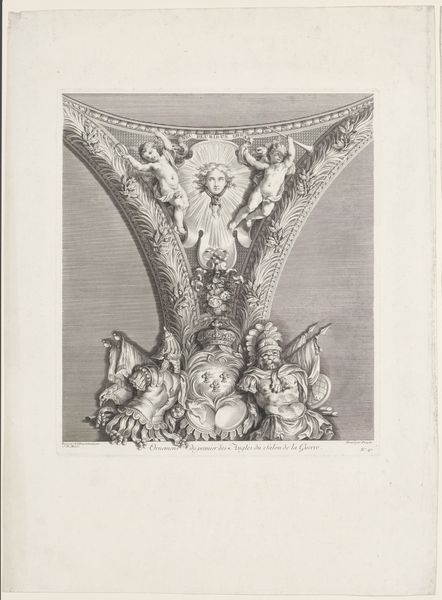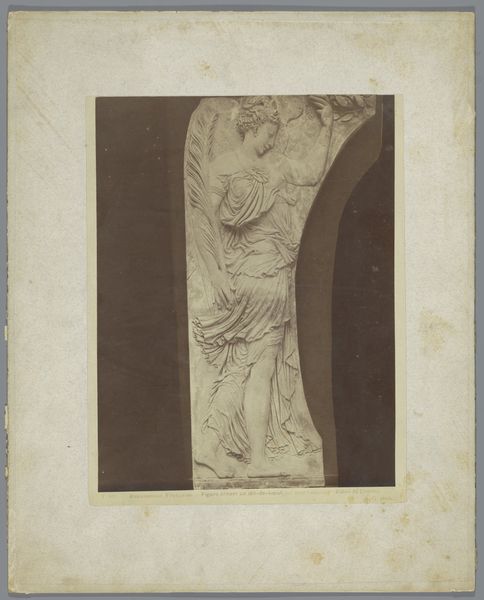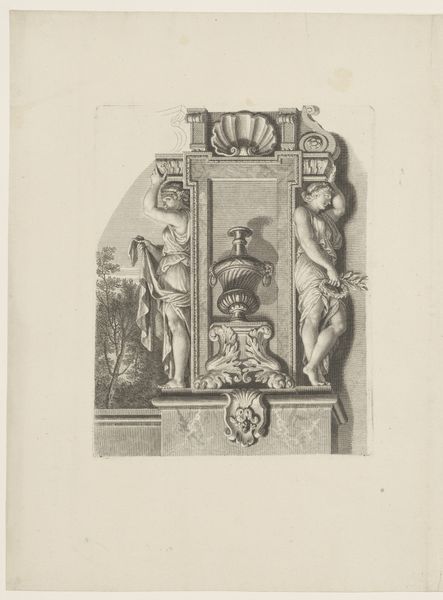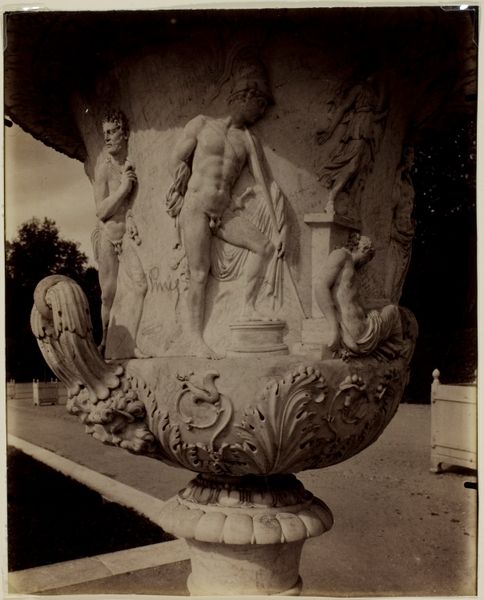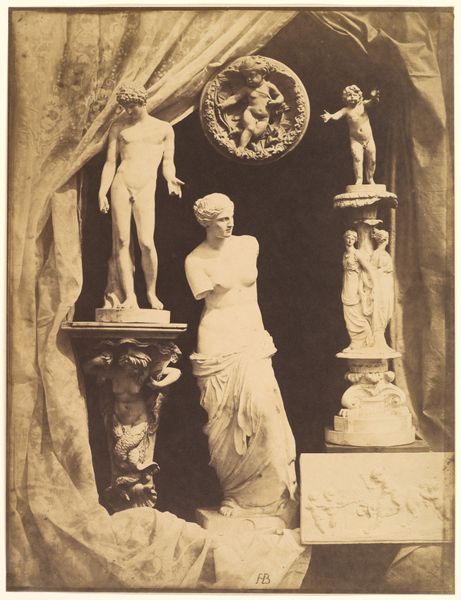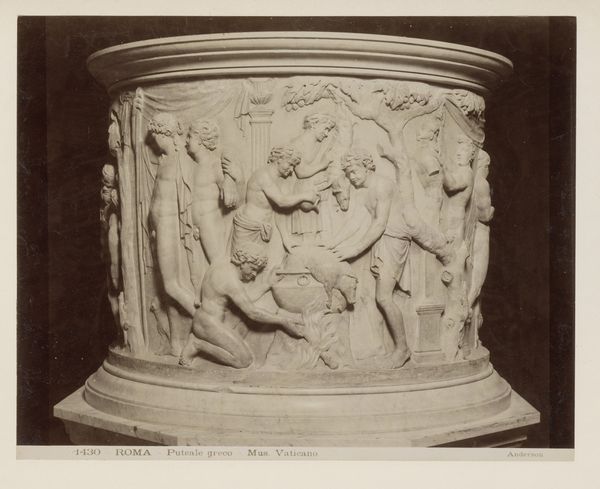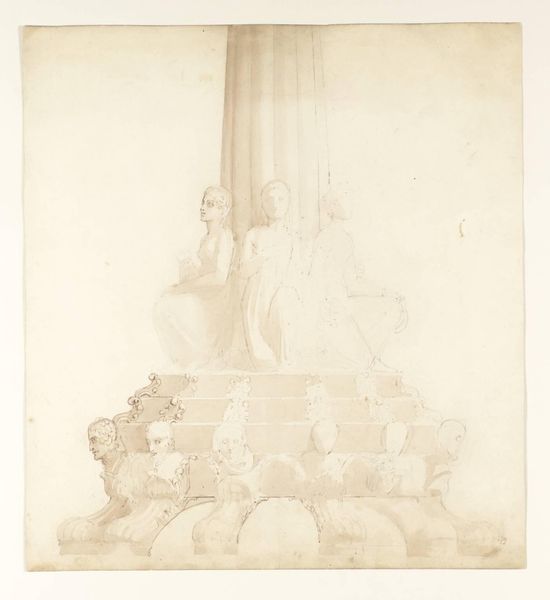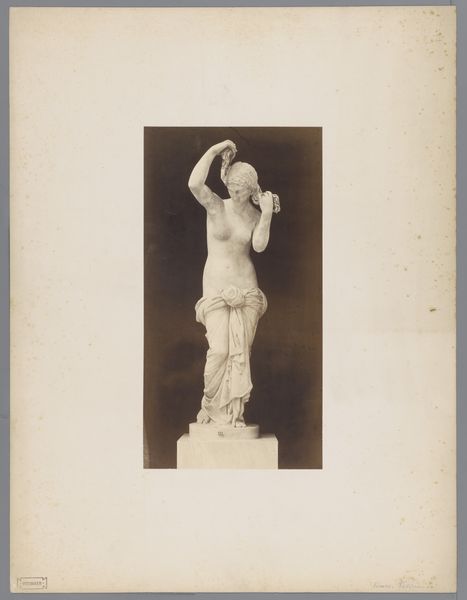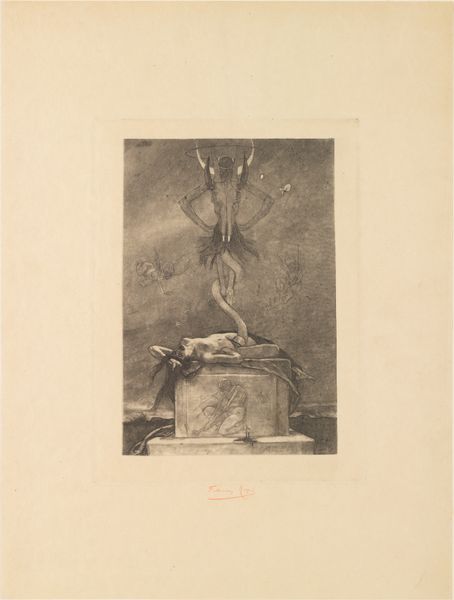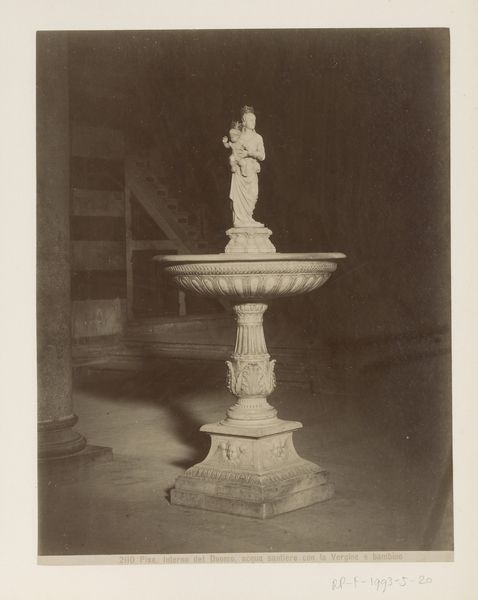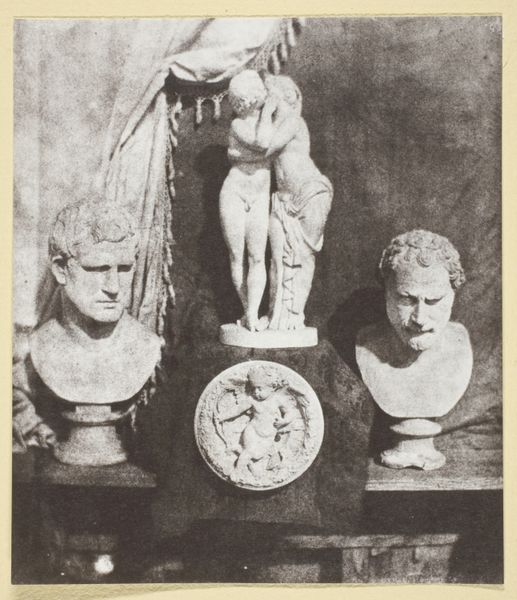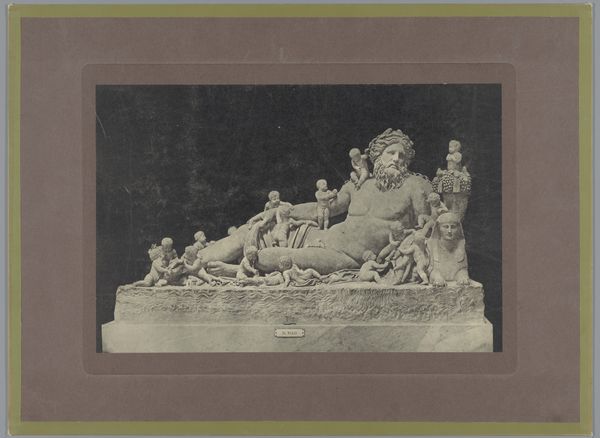
Compositie van gipsen ornamenten uit het atelier van J. Delbove, Brussel, België 1860 - 1882
0:00
0:00
found-object, photography, sculpture, plaster
#
found-object
#
photography
#
sculpture
#
plaster
#
academic-art
Dimensions: height 258 mm, width 210 mm
Copyright: Rijks Museum: Open Domain
Curator: We're looking at a photograph titled "Composition of Plaster Ornaments from the Atelier of J. Delbove, Brussels, Belgium," created between 1860 and 1882 by Charles De Trez. Editor: The plaster pieces give off such an austere, almost ghostly vibe—so white and rigid, lined up like subjects for examination. Curator: Precisely! These were meant as models. Charles De Trez gives us a peek into Delbove's workshop, showcasing various plaster casts for architectural or sculptural elements. It's fascinating to see how these academic designs translated into tangible objects and, ultimately, how they dictated social taste. These wouldn’t just adorn walls; they'd communicate social standing, power, and supposed refined taste. Editor: Absolutely. And it’s also revealing about the industrialization of art. Delbove's atelier essentially mass-produced ornament. Plaster, such a readily available material, allowed for replication on a grand scale. One can imagine how molds were used to crank out variations of acanthus leaves or classical figures like those we see here, contributing to a pervasive aesthetic for public and private spaces. Consider, too, the laborers who formed and refined these objects. Curator: I think there’s a distinct gender element to unpack. These pristine plaster casts recall the idealized form frequently celebrated in neoclassical art, often portraying women. Here they seem devoid of context. This image freezes them; it deprives them of movement or agency. Plaster, too, can serve as a potent metaphor. We have, on the one hand, its ability to emulate, but also its inherent fragility; its symbolic representation of the ideal woman, on the other hand. Editor: And photography plays its role as well, no? Capturing and documenting these objects turns them into commodities. It's fascinating how a seemingly straightforward image contains such layers of labor and historical significance. De Trez immortalizes a fleeting stage in artistic creation, and we’re left contemplating not only the objects but also their origins and implications within a developing industrial society. Curator: Indeed, we have seen that this is not just plaster. It is more like a document, a frozen narrative where classicism intersects with emergent capitalist forces, telling stories about those excluded and favored. Editor: These lifeless sculptures really have animated the topic here—offering much food for thought about design and consumption, materiality and class in late 19th century Belgium.
Comments
No comments
Be the first to comment and join the conversation on the ultimate creative platform.
